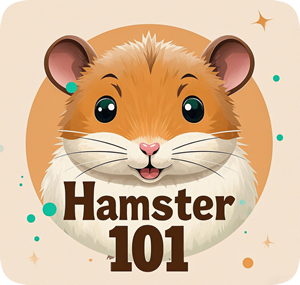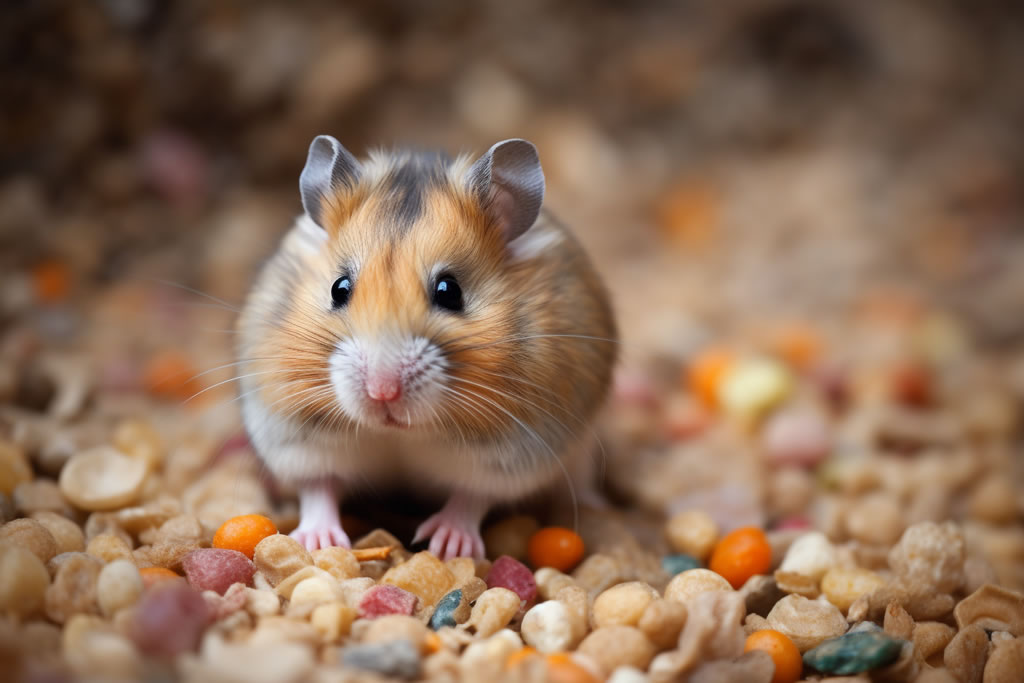Let’s get real—I once nearly loved my Syrian hamster, Nugget, to death with kale. Turns out, hamster feeding isn’t just tossing seeds in a bowl. After 3 AM vet trips and a crash course in rodent nutrition, here’s everything I wish I’d known, served with a side of dark humor and hard-earned wisdom.
The Great Portion Deception
Why Your Hamster’s Cheeks Lie
The Pet Store Myth: “Feed 1-2 tablespoons daily!”
Reality: My dwarf hamster, Gizmo, turned into a furry beach ball on that plan.
Actual Feeding Guide (By Species)
| Hamster Type | Dry Food Daily | Fresh Treats | Secret Snack Habit |
|---|---|---|---|
| Syrian | 1.5 tbsp | Blueberry fingernail | Hoards kibble in toilet roll |
| Roborovski | 1 tbsp | Lentil-sized carrot | Buries mealworms like treasure |
| Chinese | 1.25 tbsp | Broccoli floret | Stores food in wheel spokes |
| Dwarf Campbell’s | 0.75 tbsp | Chia seed sprinkle | Steals roommate’s portions |
Pro Tip: Use a shot glass for measuring. My “tablespoon” was actually 3 tbsp. Oops.
The Schedule That Actually Works
From a Sleep-Deprived Hamster Mom
6 AM: Refill water (they’ll knock it over by 7)
6 PM: Pellet dinner (watch them stuff cheeks dramatically)
9 PM: Veggie snack (size of their ear = perfect portion)
3 AM: Secretly record their snack raid for TikTok
Night Shift Reality Check
- They eat 6-8 mini meals nightly
- That wheel isn’t exercise—it’s digestion breaks between courses
Food Wars: Safe vs. Death Traps
Learned Through Emergency Vet Visits
| Safe Foods | Portion | Danger Zone | Why It’s Bad |
|---|---|---|---|
| Cooked egg white | Pea-sized | Raw beans | Cyanide risk |
| Plain popcorn | 1 kernel | Almonds | Choking hazard |
| Mealworms | 2 weekly | Citrus fruits | Acidic diarrhea |
| Oat sprays | 1 inch stem | Onions | Blood cell destroyer |
Confession: Gave Nugget avocado. $300 vet bill later…
The Hoarding Intervention
How to Outsmart Your Furry Prepper
Step 1: Locate stash (usually under wheel)
Step 2: Remove moldy bits wearing gloves
Step 3: Replace 20% with fresh kibble
Step 4: Watch them have existential crisis
Stash Hotspots
- Behind the silent spinner
- Inside TP tube forts
- Buried under water bottle (why?!)
Obesity Check: Is Your Hamster Chonky?
The Toilet Paper Tube Test
- Fit through? Healthy
- Stuck? Time for diet
Exercise Hacks
- Scatter feed in bedding
- Use puzzle feeders (empty pill bottles work)
- Create veggie obstacle courses
Fresh Food Fails (And Fixes)
The Good
- Bell peppers (remove seeds)
- Cooked sweet potato (cooled)
- Bok choy leaves
The Ugly
- Cucumber = watery poop fountain
- Spinach = calcium overload
- Apple slices = cheek abscess risk
Pro Preservation Tip: Freeze diced veggies in ice cube trays. Thaw one cube nightly.
The Forbidden Snack List
What Pet Stores Won’t Tell You
- “Healthy” granola: Sugar bombs in disguise
- Yogurt drops: Equivalent to us eating 12 donuts
- Sunflower seeds: Heroin of hamster world
- Pet store “treat sticks”: Cement for teeth
Feeding Gadgets That Actually Help
| Tool | Cost | DIY Alternative |
|---|---|---|
| Ceramic bowl | $8 | Jar lid |
| Foraging wheel | $25 | Egg carton + tape |
| Water bottle | $12 | Shot glass (changed 3x daily) |
When Hunger Strikes: Emergency Signs
- Chewing cage bars = Boredom + hunger
- Eating bedding = Fiber deficiency
- Hoarding nothing = Dental issues
- Ignoring favorite treats = Illness
The 3 AM Panic Protocol
Situation: Hamster not eating
Step 1: Offer baby food (squash/apple)
Step 2: Try unsweetened cereal mush
Step 3: Syringe feed critical care formula
Step 4: Call vet if no improvement by sunrise
Final Thoughts:
After Nugget’s Great Kale Incident of 2023, I learned balance is key. Now I measure portions with jewelry scales and hide veggies like Easter eggs. Still catch him side-eyeing me when I eat chips though.



